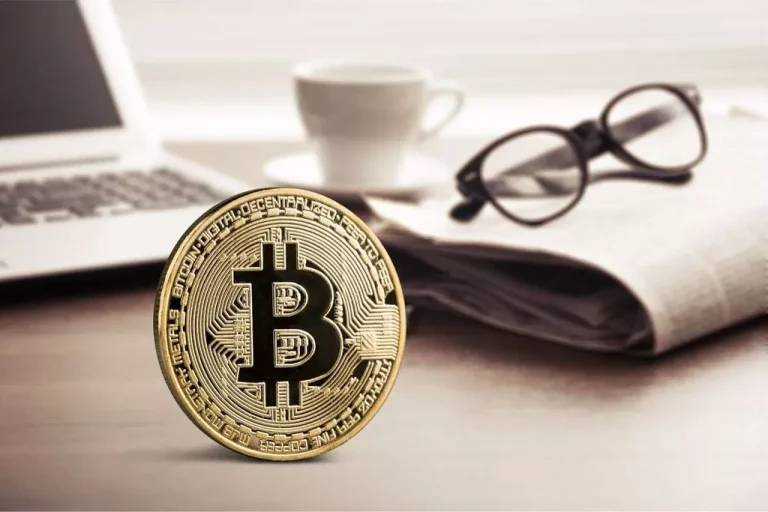You can see these public gas auctions in action in our presentation How Everything (and Nothing) Changes With Gas Fees. Referring again to our complete payment formulation yet one more time, layer 2 scaling options provide a way to save on gasoline by reducing the variety of gasoline models required to finish a transaction. Because this methodology interacts with Ethereum solely when the transaction is being validated, less gasoline is required by Ethereum miners to deal with the interaction. Layer 2 solutions also ease Ethereum community congestion, leading to an total lower base charge for all users. In doing so, layer 2 scaling options https://www.xcritical.com/ might help you spend considerably less on gas.
This implies that participants in the blockchain community settle for the longest chain of blocks as the one legitimate one. Network participants (miners) compete to resolve complex cryptographic puzzles and turn out to be the primary on the community to efficiently validate each new block. In order to get an understanding of why fuel charges cost so much and how you can save on them, it’s essential to understand how they’re calculated. For example, with Ambire’s Gas Tank, you can prepay for fees by sending your tokens of selection in advance to the relayer, just like you’ll with a pay as you go sim card to a community operator.
How Does That Examine To Excessive Bitcoin Fees?

Discover the significance of fuel charges in cryptocurrency transactions and learn to use a gas calculator to estimate prices. Ethereum at present has the best fuel fees of all ETH-based cryptocurrencies. Its common gas fee is fifty one.29 gwei, which is much more than, for example, Binance Smart Chain, whose average fuel price stands at 6.450 gwei. Gas charges have two main duties — to compensate validators and to increase the security of the ETH network. Namely, validating transactions includes the consumption of electrical energy and the purchase of specialised laptop equipment.
Precedence Payment (tips)

Gas charges are typically at their highest on Friday throughout market hours. For example, should you were to promote an NFT (non-fungible token) on a market like Uniswap, your gasoline fees would in all probability solely be a few dollars. It’s additionally essential to notice it is unlikely we’ll Proof of stake see extended spikes of full blocks due to the pace at which the bottom charge increases preceding a full block.
What Is Gwei?
“Layer 2” is another answer, which refers to a secondary framework for processing transactions constructed on top of an existing blockchain. The objective with a layer 2 answer is to increase transaction velocity and cut back costs by “rolling up” work earlier than recording it on the primary blockchain. Examples of layer 2 tasks embody Bitcoin’s “Lightning Network” and Polygon (MATIC -2.61%) and Uniswap (UNI -6.54%) on Ethereum. Other cryptocurrencies could merely call these transaction charges, miner fees, or something comparable. However, since Ethereum is at present the second-largest crypto by market cap, the term “gas” is usually applied when referring to the fees involved in executing work on different blockchains. It’s only a value of decentralized peer-to-peer switch; the precise mechanism that also permits you true ownership over your assets.

This guide explores their function, applied sciences, and future impression throughout industries similar to DeFi, NFTs, and gaming. The Shapella fork is the combination of two main Ethereum community upgrades (Shanghai and Capella upgrades) that occurred concurrently. Together, these upgrades allowed customers to withdraw their staked ETH on the network. Gas fees are an inherent and indispensable element of crypto, and it’ll take some time till they’re not an impediment to giant adoption and become insignificant for users.
Similarly, the protocol will decrease the base payment if the block measurement is lower than the goal block size. The quantity by which the base fee is adjusted is proportional to how far the current block dimension is from the goal. Blockchain transaction charges are charges users pay to have their transactions processed and confirmed by the community. These charges are an integral part of blockchain expertise and serve crucial functions that guarantee the smooth operation and sustainability of the community. The base charge is a reserve price of the present block, which is the lowest amount of gas wanted to include a transaction on the community.
- Ethereum fuel charges are lowest on each weekends and in the course of the evening for the United States.
- That said, fuel fees are typically lowest on weekends, between 2 AM and 3 AM EST, and between midnight and four AM EST on weekdays.
- Users can adjust fuel costs to probably expedite transaction processing, or choose to execute transactions throughout off-peak hours for cost financial savings.
- The opinions and views expressed in any Cryptopedia article are solely these of the author(s) and don’t reflect the opinions of Gemini or its administration.
- The EVM then reverts any changes, but since the validator has already done 20k gasoline items value of work, that gasoline is consumed.
- Another way to spend much less on fuel charges is to set a most gasoline fee limit on your transaction.
For instance, gasoline is required to send ETH, to mint and buy non-fungible tokens (NFT), and to make the most of Ethereum-based sensible contracts and decentralized applications (dApps). While easy transactions—like sending ETH—cost less, complicated operations (e.g., interacting with good contracts) eat more fuel, leading to higher prices. Gas calculators function by enabling users to enter variables such because the fuel limit (maximum items of fuel for a transaction) and fuel value (cost per unit of gas). Based on these inputs, the calculator computes the total transaction charge within the network’s native cryptocurrency (e.g. Ether for Ethereum). This estimation helps users plan transactions with precision and avoid surprising costs. Ethereum charges are high when the network experiences a fast spike in demand for getting transactions submitted on-chain.
Many different technical approaches are being developed in parallel so as to scale the capacity of Ethereum, improve throughput and decrease Ethereum fuel fees. Out of those, rollups are beginning to point out themselves as a promising answer. Layer 2 scaling solutions are off-chain, that means they deal with transactions individually from the Ethereum blockchain.
Although the crypto space can be considered as extremely speculative and must be approached with caution by buyers, fuel charges offer a cause to keep currencies such as Ethereum on your radar. Owners of Ether can stake their holdings and earn passive income from gasoline charges. Cryptos corresponding to Ethereum function on a blockchain, a digital ledger of transactions distributed to a big and decentralized network of computers that handle the blockchain. This is in contrast to cloud computing, which is a centrally managed computing course of (usually via a company’s knowledge center). Gas is paid to the decentralized community of computers for performing the work — on this case, the computing energy — needed to execute and document operations on Ethereum. Its rapid spike in popularity what are gas fees crypto triggered vital network congestion and intensely high gas fees.
Gas calculators simplify the process of determining the optimum fuel restrict and gasoline value for transactions, making certain customers can manage costs successfully. Ethereum fuel fees play an important role in maintaining the blockchain’s functionality and security. They incentivize validators, deter community spam, and enable clean transaction processing. These crypto transaction charges are measured in gwei, which are small parts of Ether and are just like Bitcoin’s satoshi. While network users resolve how a lot gwei to pay for every unit of gasoline, the ultimate cost might be based on provide, demand, and network capacity. Additionally, fuel costs might increase throughout occasions of excessive demand or significant events, similar to new crypto launches.
Put merely, the miner on a proof-of-work community needs an incentive to only break even! Proof-of-work networks thus reward miners with a block reward for their hard work, often in newly minted currency. Ether gas fees could be reduced by ready to position your transaction till the community is less congested. The Ethereum network is at its slowest over the weekend and when the US stock market is closed. The primary value-add of sharding will be a dramatic discount in the fuel fees required to transact on Ethereum. This gasoline fee discount will dramatically enhance the network’s capacity to scale.